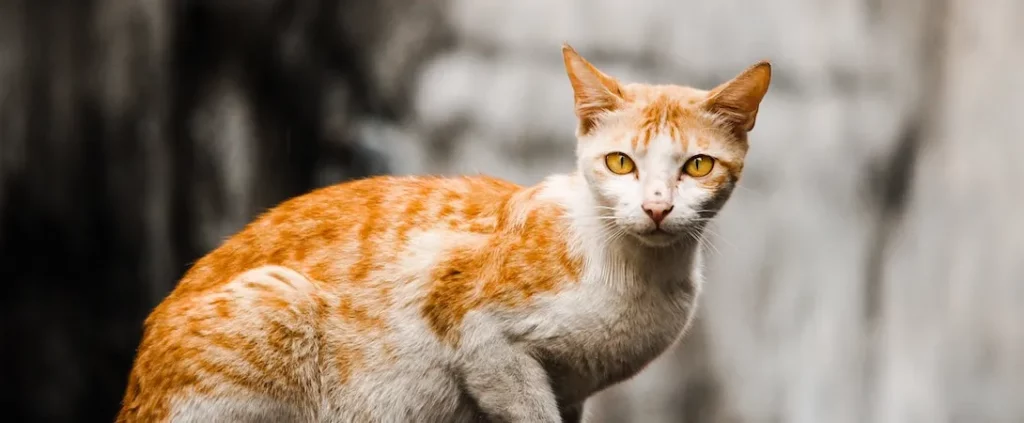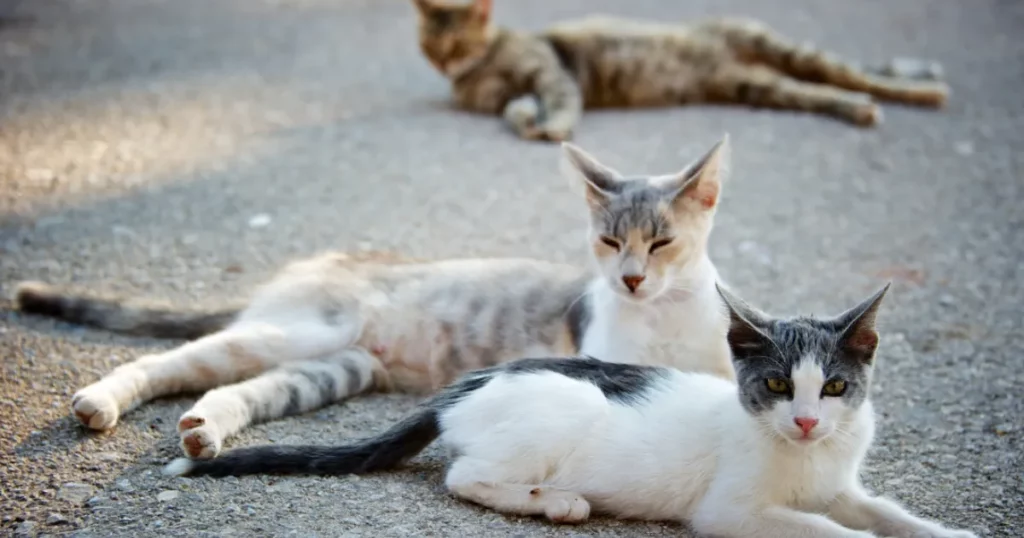Do you want to know how to tell if a cat is feral? Here, you will get to learn how to tell if a cat is feral.

Feral cats are often misunderstood, and roam our neighborhoods, exhibiting distinct behaviors that set them apart from domesticated cats.
It’s essential to discern whether a cat is feral or simply a lost or stray pet, as this distinction significantly influences the approach to care and interactions with these animals.
Furthermore, feral cats are those born and raised in the wild, often exhibiting behaviors that are indicative of their independent, self-reliant nature.
How to Tell if a Cat is Feral

Here, you will get to know the eight key indicators to help identify feral cats:
1. Through Their Elusive Behavior
Feral cats tend to display extreme shyness and avoidance of human contact.
Also, they often keep their distance and avoid direct interaction, retreating into hiding when humans approach.
This inherent wariness results from their lack of exposure to human socialization during their formative years.
2. Through Territorial Marking
Another common behavior observed in feral cats is territorial marking.
They use scent glands on their cheeks and paws to mark their territory, communicating with other felines in the area.
Interestingly, marking serves as a method of claiming space and establishing boundaries, which is a distinctive trait in feral cats.
3. Through their Survival Skills
Feral cats exhibit exceptional survival instincts.
Also, their ability to hunt, scavenge, and fend for themselves in the wild is significantly more developed than that of domestic cats.
Their survival skills are honed by the constant need to find food and shelter without human care.
4. They Lack means of Identification
Unlike domestic cats, feral cats typically lack any form of identification, such as collars or tags.
Also, this absence of identification makes it challenging to determine if a cat has an owner or if it’s truly a feral cat.
5. Through Skittish Demeanor
Feral cats are easily startled and show signs of fear or panic when approached.
They might hiss, growl, or display defensive behavior if they feel threatened, contrasting starkly with the calm, curious behavior often seen in domesticated cats.
6. Through Physical Appearance
The physical appearance of a cat can provide vital clues about its feral status.
Feral cats might appear unkempt, with a scruffy coat, torn ears, and various scars from fights or injuries sustained while navigating the wild.
7. Reluctance to Enter Spaces
Unlike domestic cats, feral cats are apprehensive about entering confined spaces.
Also, they typically avoid enclosed buildings or enclosed areas, preferring the freedom and safety of the outdoors.
8. Through Social Behavior
Feral cats, due to their lack of exposure to human interaction during their crucial development stages, exhibit minimal to no interest in human companionship.
They are solitary creatures, prefer their independence, and avoid socializing with humans or other domesticated animals.
In conclusion, by recognizing these distinctive characteristics, individuals can responsibly approach the care and management of feral cats.
Related Searches: